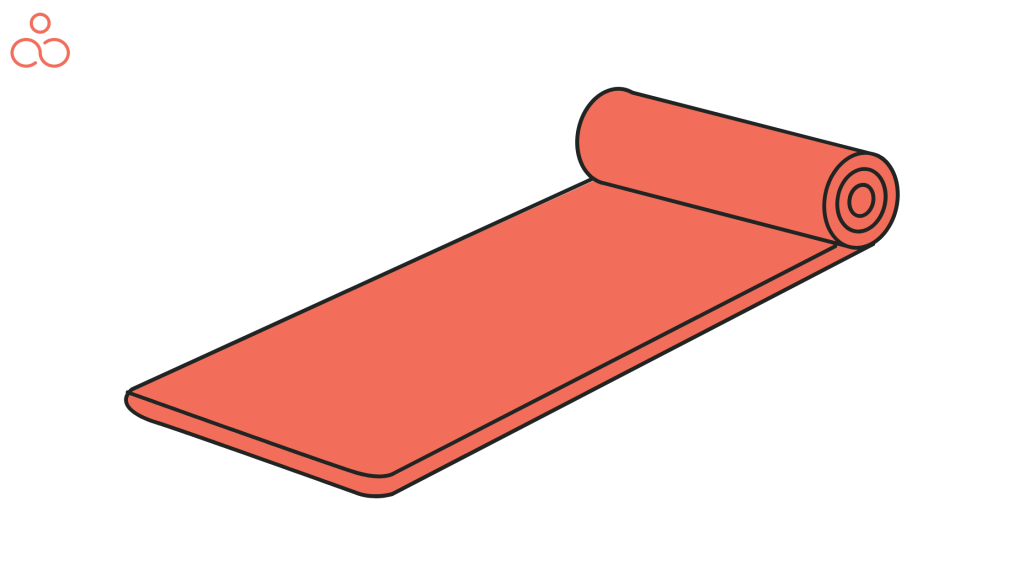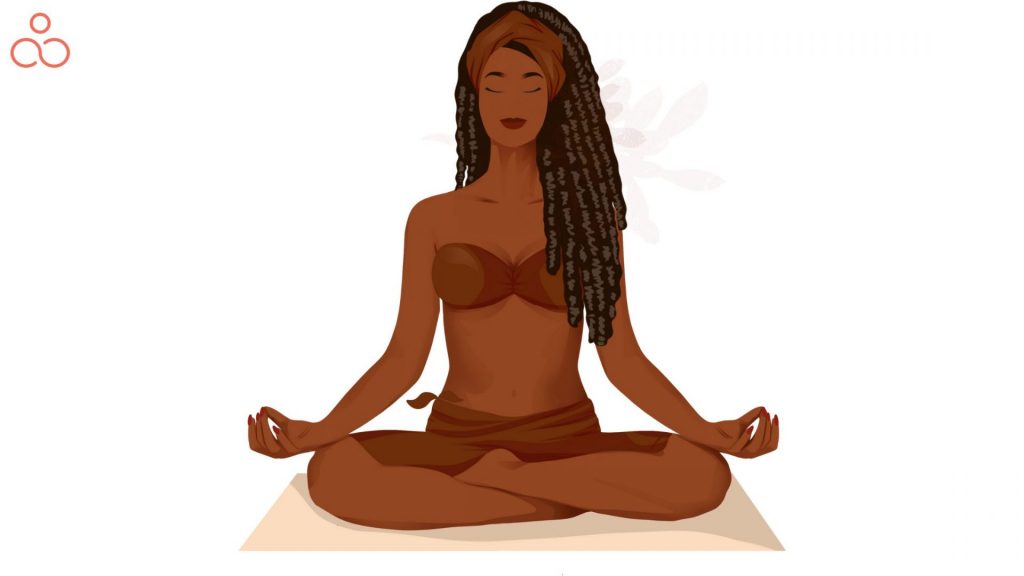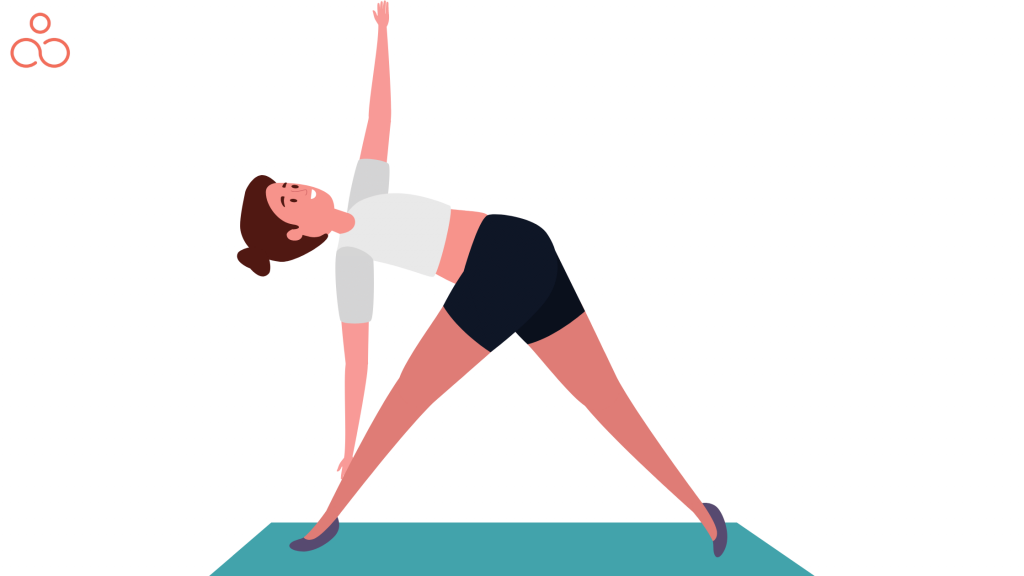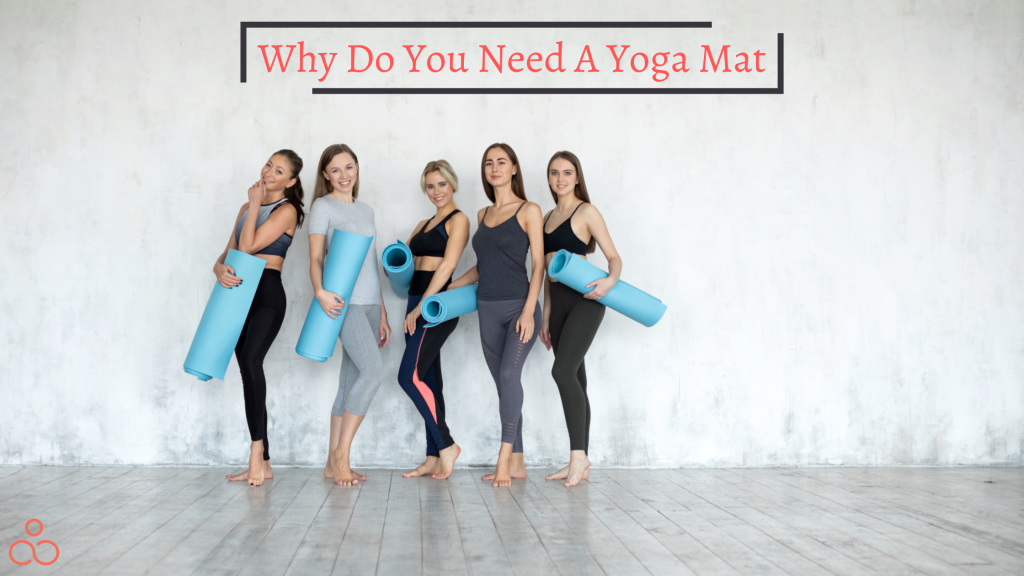Is a yoga mat required? Many individuals believe that using a yoga mat is essential for practicing yoga. It very well may be as all yoga enthusiasts carry this yoga companion with them for their yoga regimen. At some point during the practice, every yoga practitioner tends to have this question pop into their head, “Why do you need a yoga mat?” Today, we are here to answer this question after experiencing a similar dilemma ourselves.
Yoga and Yoga Mat!

Your body and mind are most crucial for yoga and a yoga mat can only aid in your development and make the entire procedure much more pleasant and simple. A yoga mat is not necessary for all types of yoga but let’s focus on the general populace and yoga varieties. We’ll also discuss the benefits of having a yoga mat in the below sections.
Yoga practitioners frequently argue that since the practice is all about focusing on our feelings and remaining in the present, there is no need to use a mat. A nice yoga mat, they add, is an extra cost and might not even be required. Despite this, a yoga mat is still necessary if you wish to practice yoga frequently at home to protect yourself. If everything else is equal, is a yoga mat required? Could be.
Is a Yoga mat truly necessary?

Your yoga equipment should include a mat since it protects and stabilizes you, gives you a strong grip and prevents slippage. It’s also one of the most sanitary surfaces to practice on and guarantees that you have adequate padding for a comfortable yoga session.
The finest yoga mat may be a huge support and assistance to yoga practice if it is constructed of natural materials. It will, however, still rely on the type of exercise you perform. A pricey yoga mat is not necessary if all you want to do is unwind and practice meditation.
You need a yoga mat to protect yourself from injuries, provide you with a designated, private place to develop your practice, and make your practice more pleasant overall.
Without a mat, yoga may be quite painful, and you’ll need to continually adjust your weight to keep your muscles from soreness. Your mat will be necessary to provide you with protection in several positions that can cause strain to your knees or elbows. It is much more crucial if you are training on a hard surface because there is a higher chance that you may feel sore after your practice.
Long-term yoga without a mat can cause more than simply stiffness; it can also result in chronic issues like lower back pain or knee injury from slipping while holding a posture. But ultimately, you shouldn’t choose to practice yoga without a mat.
If you don’t have access to one, consider sticking to standing positions to prevent joint damage. Take assistance from the surroundings as well. For other stances, you may, for example, lean against the wall for more support.
Go outside and practice on some grass instead. However, this might result in soiled hands and clothing after the practice. Again, none of these fixes will work in the long run, so if you want to practice yoga frequently, a mat is a worthwhile investment.
The Yoga mat’s history

One of the most well-known and esteemed yoga instructors around the globe is Angela farmer. For more than 40 years, she has been a teacher. She underwent surgery when she was young, which left her unable to perspire from her hands and feet. I don’t know whether you’ve ever done yoga in the winter when everything is so dry on a wooden floor. As your hands and feet fumble about all over the place, it almost seems like a yogic tragi-comedy. Particularly slick positions include standing and downward dog.
Farmer’s health issues did not prevent her from working with BKS Iyengar in London in the 1960s when he was lecturing. He prohibited her from using a foam mattress or wetting her hands and feet to provide traction. In 1968, while she was a professor in Munich, she stumbled upon a tiny piece of carpet manufacturing underlay. It was the ideal response to her issue.
Her carpet-underlay yoga mat quickly gained a lot of traction with her London-based pupils. After some time, Angela’s father made a connection with the proprietor of the German carpet plant and started selling yoga mats out of his Vancouver Island house. The yoga mat was a therapeutic tool created by Angela farmer. The mat’s stickiness helped with a health issue.
What is the point of a Yoga mat?

When you practice yoga asanas, mats designed for yoga offer various benefits for your body. See a few of these advantages below.
- Comfort: The primary benefit of a yoga mat is comfort for the users. Yoga asanas can be very painful during the first few sessions. You might require additional comfort and assistance when maintaining postures, breathing, or stretching. The use of a yoga mat is here. A yoga mat is also necessary if you have joint discomfort or a knee injury. A yoga mat provides the best padding to help you feel comfortable while practicing.
- Injury rates drop: When you stretch or twist while doing yoga asanas, your body is put to the test. If something goes wrong, you can damage yourself, especially if you’re just starting. Your risks of being hurt are decreased by using a non-slip yoga mat because injuries are sometimes brought on by slipping during difficult yoga postures.
- Stability: stretching occurs frequently while doing yoga, especially in postures like the yoga full split. As a result, during stretching, the body requires maximal stability. While performing yoga asanas, a decent yoga mat provides support and aids in maintaining the body’s equilibrium. Additionally, while you are sleeping on your back or practicing meditation, you benefit from an additional layer of comforting padding.
- Warmth: Your body expels a ton of energy when you practice yoga. You need to save this energy because it keeps you moving forward. The earth is shielded from this energy by a yoga mat. It protects it and aids in maintaining your body’s heat throughout the session.
- Strengthening with setting up poses: A yoga mat aids in properly establishing the poses. A decent yoga mat should have enough traction for you to maintain your balance as you transition from one pose to the next. Additionally, it will enable you to maintain the stance properly and for a longer period.
- Hygiene: Yoga on the ground might be dangerous since you could come into contact with dirt, bugs, and pathogens. Any time you do an asana, your body starts to perspire, which increases your risk of attracting germs.
- Body directives: If you don’t utilize the mat, it is difficult to keep your posture when performing asanas. It becomes challenging to perfect your body’s alignment and posture. When practicing yoga on a mat, some rules must be followed and a specified area in which to move. Without a mat, however, it is more challenging to confine your body to a certain area, which increases the likelihood that you will do the pose incorrectly.
How to select Yoga mats

Choosing a decent yoga mat depends on a small number of criteria, but all of them directly affect how your yoga sessions will go, unlike other forms of athletic equipment and accessories. You should think about the weight, thickness, and manufacture of the yoga mat you choose. The yoga mats are also available in various materials and a lot of other factors such as the cost, durability, etc. depend on it. Additionally, if you practice yoga frequently, you should be concerned with toughness. Fortunately, we have some helpful advice for you.
Yoga mats that are widely used in the market are:
- PVC mats are constructed from a synthetic polymer that produces incredibly lasting goods. PVC yoga mats have the advantage of being inexpensive and lightweight, making them a much better choice for beginners who are still figuring out what kind of yoga mat would work best for them. PVC, however, has a lot of drawbacks: it is produced in a way that is highly destructive to the environment, it has a strong off-gassing smell, and it includes a lot of compounds that some people consider hazardous (like phthalates).
- Natural rubber yoga mats have a wide range of advantages that one simply cannot ignore, including the fact that it is a biodegradable material (because it comes from natural rubber trees, and thus helps protect the environment), it has a very sticky feel to it (which means that you’ll get a good grip even when your body starts to sweat), and it is used to create mats that are appropriate for all levels of yoga proficiency. Rubber mats are heavier than PVC ones, cannot be kept in full sunlight without warping, and are also more costly than PVC ones.
- Yoga mats can also be made from PER, which stands for polymer environmental resin. The primary drawbacks of PER mats are that they are less sticky than PVC mats and don’t initially offer as much grip (since most of them require a break-in time). When they are unboxed, they don’t smell bad and are inexpensive, biodegradable, and non-toxic.
- The least-lasting option among those described here is TPE, which still offers several advantages. These mats come in a variety of textures, are non-toxic and biodegradable, can ward off moisture, and are lightweight.
You should consider what you want in a new yoga mat when selecting a material for it. Rubber mats are a wonderful option if you want something with a non-slip surface (to prevent falling and being hurt). If the environment is important to you, avoid PVC. However, it is a decent option, though, if durability is what you’re after.
A yoga mat’s weight will also depend on its thickness and the materials that were utilized to construct it. The truth is that you shouldn’t be overly concerned with the weight if you want a yoga mat that you can use at home. You need a mat that can be folded up and is lightweight if you frequently travel and practice yoga while doing so. If you frequently attend yoga lessons, you should invest in a lightweight mat that is portable and has a shoulder strap, since they are much easier to roll and carry away.
If you’re new to yoga, aim for a mat with a thickness of around 1/8 inch. This is the standard to look for since it aids in maintaining your balance while you are in contact with the ground, which is something that yoga mats with plenty of padding can’t truly offer for a beginner. However, many seasoned yogis prefer a thinner mat because it gives them greater flow during practice and makes it much easier for them to transition from one posture to another.
Why you shouldn’t use a Yoga mat

Link up with nature: Yoga is best practiced outside, in the fresh air, on grass or sand, surrounded by nature. It is crucial to pay close attention to your breathing. To obtain a lot of freshness, positivism, and inspiration from nature, practicing various asanas while in contact with it is beneficial.
Eco-friendly: Some yoga mats are manufactured from unfriendly substances including leather, vinyl, and synthetic fiber. Yoga mats that are made of PVC are said to be bad for the environment. You might choose to forgo a yoga mat if you’re concerned about how the material will affect you and the environment.
Normative movement: A yoga mat may limit your natural mobility and prevent you from reaching your full potential for certain people. If you feel constricted or restricted to the mat’s rectangular area, this can occur.
Can we do Yoga without a mat on the ground?

In general, it is advised to use a mat on the floor.
Without any sort of padding, walking on hard flooring can cause pain in your knees, ankles, and shin bones. Some individuals find that sitting on the floor all the time causes pain or at the very least takes their attention away from the activity at hand. People with back issues who don’t use a mat run the risk of making their discomfort worse because of the lack of support.
Sweating would make it very difficult to remain motionless in a warm room. Use a yoga mat to help you strengthen your grip rather than slipping all the time.
Last but not least, it won’t be very hygienic to practice without your mat if you are at a studio. In studios, the likelihood of bacteria and germs is quite high. Even little wounds on your skin might get infected. For this reason, many studios insist that you utilize a mat or towel while practicing.
If you don’t own a Yoga mat then simply follow this standing Yoga session.
If you don’t have a Yoga mat, what should you use?

You have the following options if you don’t have a yoga mat:
Woven banquets
Pros: In the absence of a yoga mat, soft woven blankets provide a good substitute. When one is meditating or practicing slow yoga, they are an excellent option since they provide a cushion.
Cons: If you do power yoga, for example, blankets might become tangled up and cause you to trip. A blanket won’t provide a firm grasp that much is certain.
Surf towels
Pros: Packing enough beach towels is an excellent substitute while vacationing. They may be stacked flat on top of one another to form a strong barrier. They may also be rolled up and placed under one’s elbows, knees, etc. As padding. Towels also assist you to get rid of any extra perspiration during practice because of their capacity to absorb moisture. Even better, get a towel that can be used on both sides so you can get more usage out of it.
Cons: When practicing yoga quickly, towels might not be stable enough. They can get slippery or muddled up.
Carpet
Pros: Yoga may be done on a carpet if you don’t have a mat at home. It would support your feet and shield you from the rough floor. While the depth and texture of your carpet will determine how comfortable it is, most carpets are still enough for protecting your knees, ankles, and elbows. They help keep your grasp stable as well.
Cons: Carpets aren’t as comfy as matting and might cause transient skin stains.
A large piece of garment
Pros: If all else fails, seek a sizable piece of cloth, ideally made of cotton or jute. This would provide you with a secure practice surface and aid in steadying your grip. A piece of fabric would likely stretch a little, so it would not be the greatest option for yoga postures that need to be maintained for a longer period and require greater stability.
For more inspirations check this video out.
Final thoughts
As you do postures and stretches, a yoga mat may protect your joints. If you feel the need, you can even lay a towel on top of your mat to provide yourself with some more protection for your knees and elbows. Yoga practice, exercise, and workout require a yoga mat. A mat’s main function is to shield you from the hardness of the floor where people will exercise. In this way, the yoga practitioner won’t trip over and hurt himself. They’re also using it as cushioning to prevent falling off, which is something everyone in yoga wants to avoid

